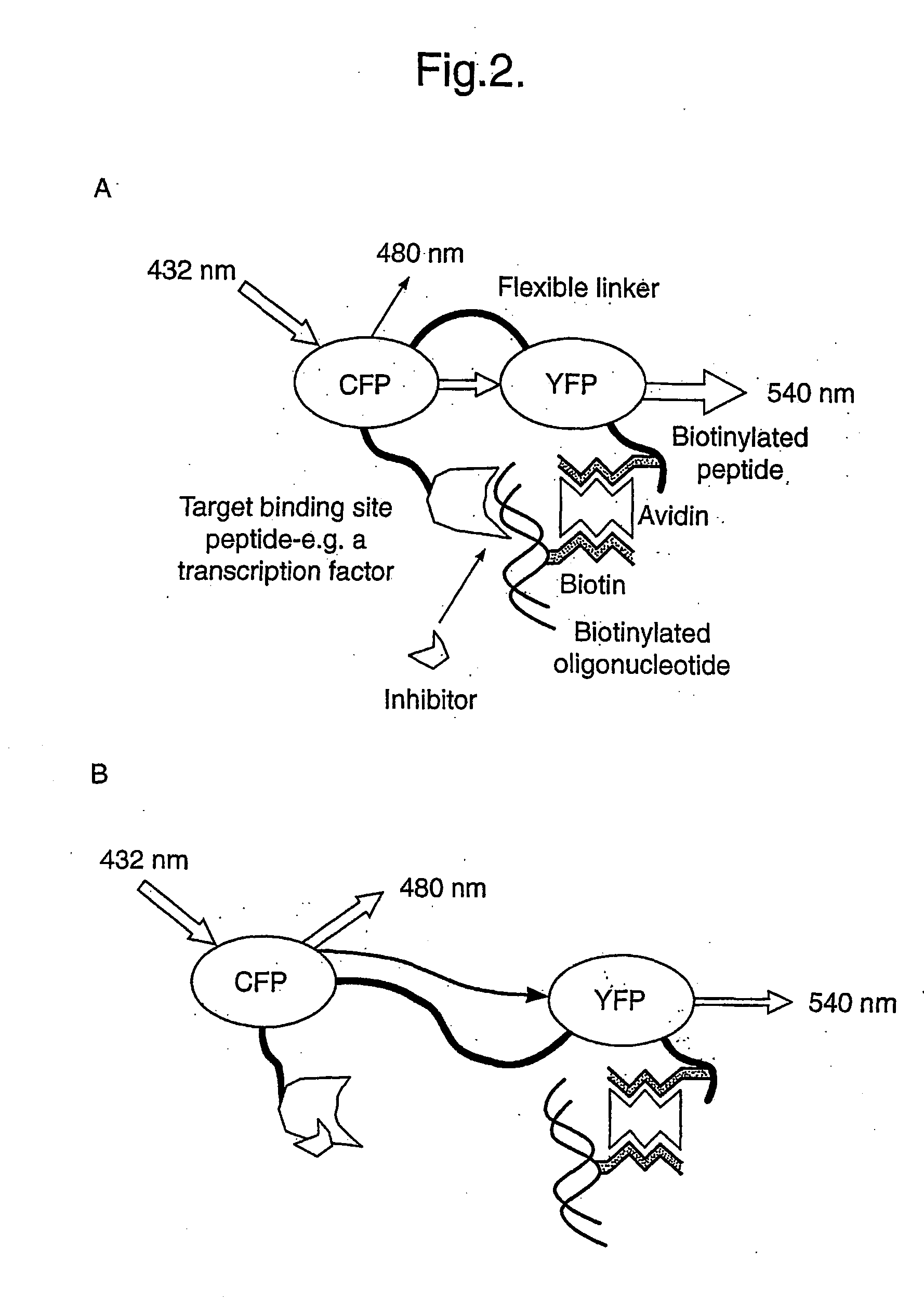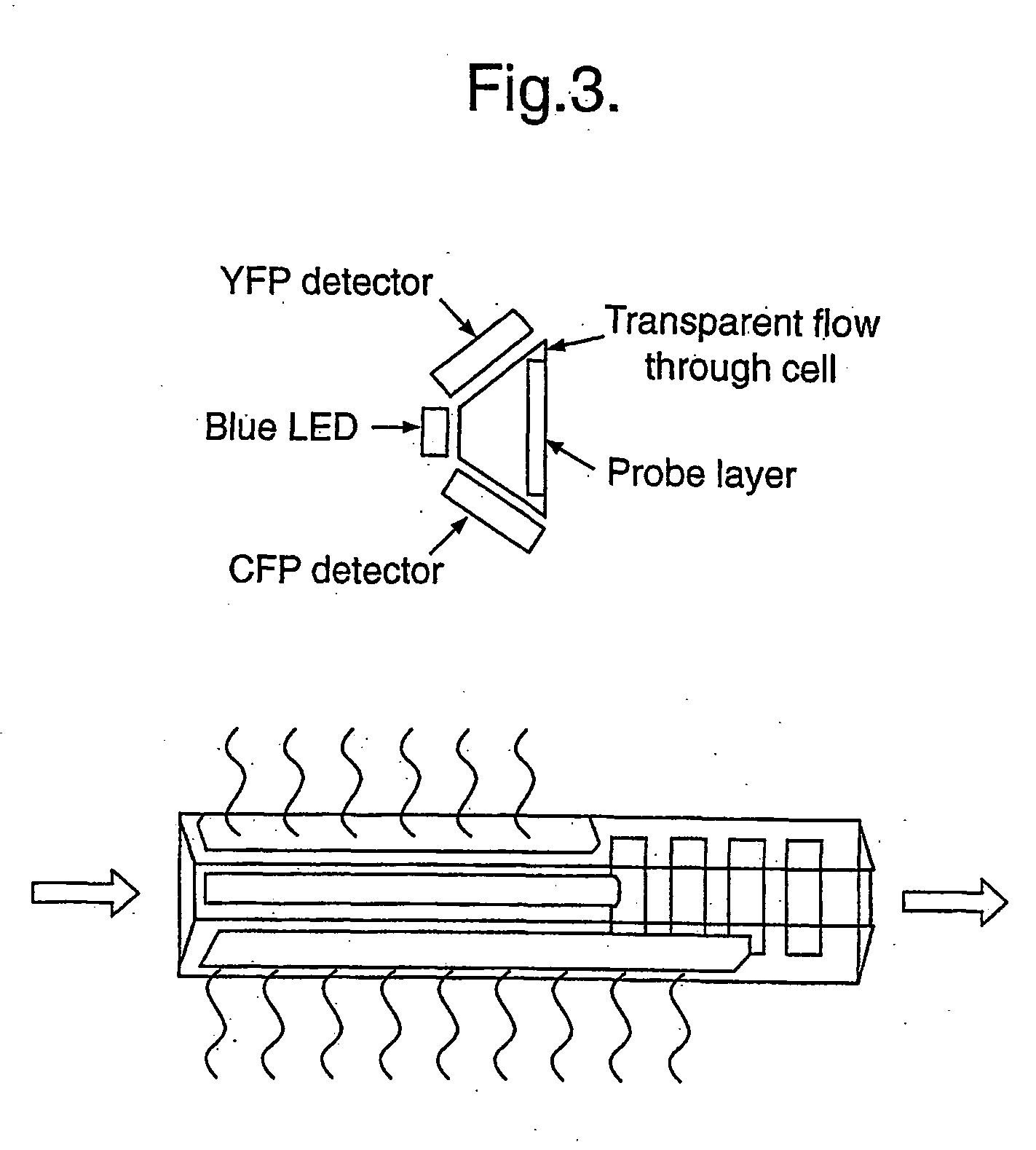Universatl fluorescent sensors
a fluorescent sensor and fluorescent technology, applied in the field of universal fluorescent sensors, can solve the problems of limiting the useful fret ratio change with target substance binding, difficult identification and screening of proteins or protein motifs with appropriate properties to both bind to the target and alter and difficult to identify and screen proteins or protein motifs with appropriate properties to achieve the effect of modifying the separation of fluorophors and identifying the target substance,
- Summary
- Abstract
- Description
- Claims
- Application Information
AI Technical Summary
Problems solved by technology
Method used
Image
Examples
Embodiment Construction
[0178] Plasmid pTrcCFRET3 was prepared. A schematic map of pTrcCFRET is set out in FIG. 4 and its sequence is set out in FIG. 5. Table 1 below sets out the features of pTrcCFRET3. The techniques and methodologies used in the preparation of pTrcCFERT3 were standard biochemical techniques. Examples of suitable general methodology textbooks include Sambrook et al., Molecular Cloning (1995), John Wiley & Sons, Inc.
1TABLE 1 Feature table for pTrcCFRET3 Nucleotide Nucleotide start finish Feature Component 11 13 ATG Initiator methionine for eCFP 698 700 CAG Final residue of eCFP 701 703 TCC Initial serine of spacer 740 742 CAT First histidine of hexa-His tag 758 760 GGT Glycine at start of epitope tag 842 844 GGT Initial glycine of spacer 899 901 ATG Initial methionine of eYFP 1619 1621 TGA Termination codon for expression
[0179] The whole of the pTrcCFERT3 construct contains a series of unique restriction sites for additional insertions, as shown on the plasmid map (FIG. 4) and is inserted...
PUM
| Property | Measurement | Unit |
|---|---|---|
| first fluorescent | aaaaa | aaaaa |
| fluorescent | aaaaa | aaaaa |
| fluorescence resonance energy transfer | aaaaa | aaaaa |
Abstract
Description
Claims
Application Information
 Login to View More
Login to View More - R&D
- Intellectual Property
- Life Sciences
- Materials
- Tech Scout
- Unparalleled Data Quality
- Higher Quality Content
- 60% Fewer Hallucinations
Browse by: Latest US Patents, China's latest patents, Technical Efficacy Thesaurus, Application Domain, Technology Topic, Popular Technical Reports.
© 2025 PatSnap. All rights reserved.Legal|Privacy policy|Modern Slavery Act Transparency Statement|Sitemap|About US| Contact US: help@patsnap.com



